Premium Only Content
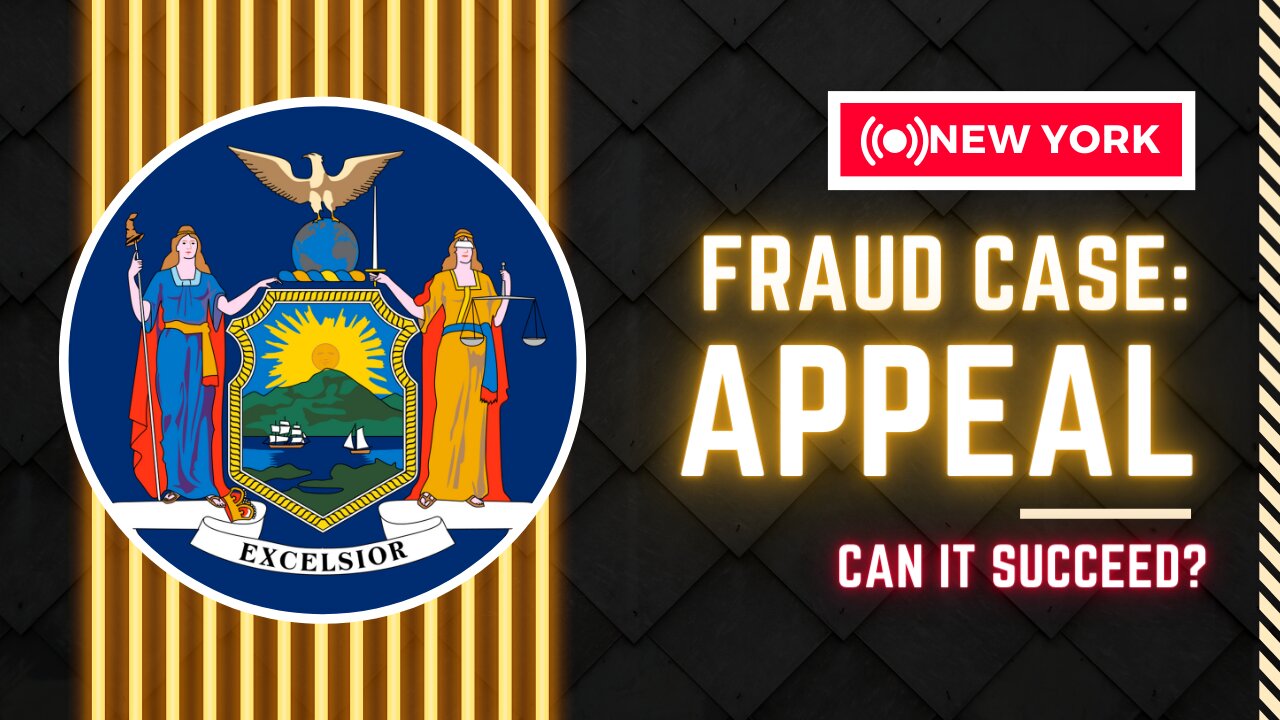
New York civil fraud case – appeal
New York civil fraud case – appeal
By Terry A. Hurlbut
Yesterday attorneys for Donald J. Trump filed notice of appeal in New York following the massive civil fine in a case alleging “repeated fraudulent or illegal acts” but neither victim nor loss. This is part of “exhaustion of remedies,” which requires an aggrieved party to petition for redress at every possible opportunity. The Appellate Division of the New York State “Supreme” Court is the next step. It is also a test of the integrity of New York’s courts – and elements of the real-estate and trucking industry are watching very closely.
How the New York fraud case came to this pass
Manhattan Judge Arthur Engoron tried the case without a jury, under Executive Law Section 63(12). In his 92-page ruling, the judge set forth his reasoning:
In mid-twentieth century New York, to judge by contemporary press reports and judicial opinions, fraudsters were having a field day.
Along came Executive Law § 63(12), which began life as Laws of 1956, Chapter 592, “An act to amend the executive law, in relation to cancellation of registration of doing business under an assumed name or as partners for repeated fraudulent or illegal acts.” Jacob Javits, then the Attorney General of the State of New York (the position that Attorney General James now occupies), pushed for the bill, as did the Better Business Bureau of New York City. See Senate Bill Jacket, February 21, 1956. State Comptroller Arthur Levitt asked, “Why not grant the Attorney General authority to enjoin anyone from continuing in a business activity if such person has been guilty of frequent fraudulent dealings.” The preponderance of the evidence standard, the one used in almost all civil cases would apply. Comptroller Levitt noted: “In a suit for an injunction, there is no need to prove the charge beyond a reasonable doubt, as in a criminal case—a mere preponderance of evidence would be sufficient.” Id.
In the subsequent six decades, the State has toughened the statute. In Laws of 1965, Chapter 666, the definitions of the words “fraud” and “fraudulent” were expanded to include “any device, scheme or artifice to defraud and any deception, misrepresentation, concealment, false pretence [sic], false promise or unconscionable contractual provisions.” The statute casts a wide net.
The judge then quoted the law:
Whenever any person shall engage in repeated fraudulent or illegal acts or otherwise demonstrate persistent fraud or illegality in the carrying on, conducting or transaction of business, the attorney general may apply … for an order enjoining the continuance of such business activity or of any fraudulent or illegal acts, directing restitution and damages and, in an appropriate case, cancelling any certificate filed under and by virtue of the provisions of section four hundred forty of the former penal law or section one hundred thirty of the general business law, and the court may award the relief applied for or so much thereof as it may deem proper. The word “fraud” or “fraudulent” as used herein shall include any device, scheme or artifice to defraud and any deception, misrepresentation, concealment, suppression, false pretense, false promise or unconscionable contractual provisions. The term “persistent fraud” or “illegality” as used herein shall include continuance or carrying on of any fraudulent or illegal act or conduct. The term “repeated” as used herein shall include repetition of any separate and distinct fraudulent or illegal act, or conduct which affects more than one person. Notwithstanding any law to the contrary, all monies recovered or obtained under this subdivision by a state agency or state official or employee acting in their official capacity shall be subject to subdivision eleven of section four of the state finance law.
The key phrases are “fraudulent or illegal acts” and “may award the relief applied for or so much thereof as it may deem proper.” That forms the basis of the fines. How Attorney General Letitia “Tish” James arrived at a figure of $370 million in damages, no one can guess. Judge Engoron awarded $355 million in disgorgement of ill-gotten gain – plus mandatory interest starting at nine percent. The full amount now amounts to $454 million, plus another $112,000 per day until final payment.
On Friday (February 23), the court formally filed its ruling with the Clerk of the New York courts. That cleared the way for a Notice of Appeal, which Trump’s lawyers filed yesterday. The full Notice contains the full text of Judge Engoron’s ruling, plus an Informational Statement specifying the following issues:
Whether Supreme Court committed errors of law and/or fact, abused its discretion, and/or acted in excess of its jurisdiction,…
The Issues statement continues with a restatement of the full effects of the rulings. Note that New York uses the phrase Supreme Court for what other States call Superior Court. The real Supreme Court equivalent in New York has the name Court of Appeals. If Trump does not succeed in the Appellate Division, the Court of Appeals is his next step. After that, he must petition the United States Supreme Court for review.
Likelihood of success
The Trump team did not specify, in its Notice, whether they had secured an appeal bond for the full amount of the “disgorgement” judgment. Trump has thirty days to post that. Obtaining a bond might be impossible under the terms of the judgment. However, Stephen Turley, Ph.D., noted that Trump will shortly realize up to $9 billion from an Initial Public Offering of his Truth Social platform. He has previously testified that he had $400 million in cash on hand as it is. (Trump’s lawyers applied to Judge Engoron for a stay of his ruling; he has refused.)
In this interview on Fox News, legal expert Sol Weisenberg suggested Trump’s team has a very strong Constitutional case “if they preserved the issues at trial.”
https://www.youtube.com/watch?v=-dmej1M_EXo
NewsMax reported Trump’s “lawyers had been laying the groundwork for months by objecting frequently to Engoron’s handling of the trial.” That is how one prepares for an appeal:
• File objection after objection,
• Expect a judge to overrule each objection, and then
• Announce with the word exception that they are stating for the record that they will cite that ruling on appeal.
Some of the grounds for appeal include:
• Ignoring the statute of limitations on some of the acts alleged, and
• Declaring “fraudulent and illegal” elements of normal business practice to which no party objected at the time.
Constitutional questions
CNAV has noted before the many Constitutional questions this case raises. They include:
• Two bill of attainder and ex post facto law clauses (Article I Sections 9 and 10),
• The Contracts Clause (from Article I Section 10 Clause 1),
• Due Process Clauses of the Fifth and Fourteenth Amendments, and:
• The Excessive Fines Clause of the Eighth Amendment.
At least one other influencer has cited the Takings Clause of the Fifth Amendment:
Private property shall [not] be taken for public use, without just compensation.
CNAV places little confidence in this clause, because this was never an eminent domain case.
Dr. Stephen Turley frankly doubts that the U.S. Supreme Court will intervene. Their concern for federalism, he said, might extend to telling Trump that he:
• Took a calculated risk by doing business in New York, and must therefore:
• Suffer the consequences of dealing with a court system that now has decided to destroy its real-estate markets by declaring normal business practices illegal.
Dr. Turley did not address the bill of attainder or ex post facto angle. Gov. Kathy Hochul (D-N.Y.) laid her State open to that very possibility, however, by telling other developers not to worry.
I think that this is really an extraordinary unusual circumstance that the law-abiding and rule-following New Yorkers who are business people have nothing to worry about because they’re very different than Donald Trump and his behavior.
The Governor’s problem is that these other “law-abiding and rule-following … business people” are not different from Donald Trump. They differ only in the size of their portfolios (smaller than his), and their public and political profiles (considerably lower).
How New York really stepped in it – and a Supreme irony
Jonathan Turley (no relation) seemed to touch on the bill-of-attainder angle in his outraged opinion on the case. But he also told those other businesses to worry – greatly – and get out and stay out of New York.
Then he suggested one ground the U.S. Supreme Court might have to intervene. Randy DeSoto at The Western Journal suggested much the same. Ironically, the key case for DeSoto is a 9-0 case with Ruth Bader Ginsburg’s name on it.
The case is Timbs v. Indiana, 586 U.S. ___ (2019). Justice Ginsburg’s opinion (in which all the other Justices except Justice Thomas joined) sets out the material facts:
Tyson Timbs pleaded guilty in Indiana state court to dealing in a controlled substance and conspiracy to commit theft. The trial court sentenced him to one year of home detention and five years of probation, which included a court-supervised addiction-treatment program. The sentence also required Timbs to pay fees and costs totaling $1,203. At the time of Timbs’s arrest, the police seized his vehicle, a Land Rover SUV Timbs had purchased for about $42,000. Timbs paid for the vehicle with money he received from an insurance policy when his father died.
The State engaged a private law firm to bring a civil suit for forfeiture of Timbs’s Land Rover, charging that the vehicle had been used to transport heroin. After Timbs’s guilty plea in the criminal case, the trial court held a hearing on the forfeiture demand. Although finding that Timbs’s vehicle had been used to facilitate violation of a criminal statute, the court denied the requested forfeiture, observing that Timbs had recently purchased the vehicle for $42,000, more than four times the maximum $10,000 monetary fine assessable against him for his drug conviction. Forfeiture of the Land Rover, the court determined, would be grossly disproportionate to the gravity of Timbs’s offense, hence unconstitutional under the Eighth Amendment’s Excessive Fines Clause. The Court of Appeals of Indiana affirmed that determination, but the Indiana Supreme Court reversed. 84 N. E. 3d 1179 (2017). The Indiana Supreme Court did not decide whether the forfeiture would be excessive. Instead, it held that the Excessive Fines Clause constrains only federal action and is inapplicable to state impositions.
To which Justice Ginsburg said: wrong!
The Eighth Amendment’s Excessive Fines Clause is an incorporated protection applicable to the States under the Fourteenth Amendment’s Due Process Clause.
Justice Gorsuch, in his concurrence, held that the Privileges and Immunities Clause might also apply. Justice Thomas said the same, and even said the Due Process Clause was not the operative clause.
But that’s a moot point. The larger point is that:
• This is an excessive fine, and
• The Fourteenth Amendment forbids a State to impose that which the federal government may not impose.
Furthermore, the Court has set a precedent of intervening against any State court that imposes, or upholds, an excessive fine. That was the unanimous opinion of the Court.
Mark Levin mentioned Eighth Amendment jurisprudence nearly a week ago:
https://twitter.com/marklevinshow/status/1760316303213011268
How likely the Court would apply their reasoning to New York
Of the Court members who signed on to the opinion, Breyer has retired, and Ginsburg has passed away. Justice Amy Coney Barrett, who replaced Ginsburg, is not likely to overrule her judgment in this case. And Ketanji Brown Jackson has occasionally found against the government in cases involving material forfeiture or something like it. See, for example, Sackett et ux. v. EPA.
But this case differs from Timbs in one particular. In Timbs, the Court merely had to judge whether the Indiana Supreme Court properly applied the Constitution. The U.S. Supreme Court decided that they had not. But when this case reaches the Supreme Court, Trump’s legal team might find themselves asking the Court to pass judgment on the fine itself.
Actually, the Court has a history of passing direct judgment on excessive fines. In 1996, the Court blocked a $2 million punitive-damages award in a case with only $4000 in actual damages. BMW of North America v. Gore, 517 U.S. 559 (1996). In this case, the damages are zero. Indeed the only thing at issue is disgorgement of gains that might – or might not – be ill-gotten.
Furthermore, the Court almost certainly will look at its decision in Department of Homeland Security v. Texas and ask what kind of social upheaval it wants to risk. If Trump gets no relief, his fellow developers will worry, and will not accept Gov. Hochul’s assurances. The result will be the worst social disaster any State has faced since the War Between the States.
Link to:
The article:
https://cnav.news/2024/02/27/foundation/constitution/new-york-civil-fraud-case-appeal/
The Notice of Appeal:
https://iapps.courts.state.ny.us/nyscef/ViewDocument?docIndex=v_PLUS_hx9UEfkTWVRUsAQUHqFQ==
Video: Sol Weisenberg interview:
https://www.youtube.com/watch?v=-dmej1M_EXo
Tibbs v. Indiana slip opinion:
https://www.supremecourt.gov/opinions/18pdf/17-1091_5536.pdf
Mark Levin mentioning the Eighth Amendment:
https://twitter.com/marklevinshow/status/1760316303213011268
Declarations of Truth X feed:
https://twitter.com/DecTruth
Declarations of Truth Locals Community:
https://declarationsoftruth.locals.com/
Conservative News and Views:
https://cnav.news/
Clixnet Media
https://clixnet.com/
-
 20:44
20:44
Declarations of Truth
10 days agoJoy Reid out!
1354 -
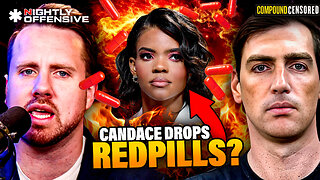 LIVE
LIVE
Slightly Offensive
4 hours ago $1.04 earnedCandace REDPILLS the Masses in BOMBSHELL Theo Von Interview | Guest: Shane Cashman
1,326 watching -
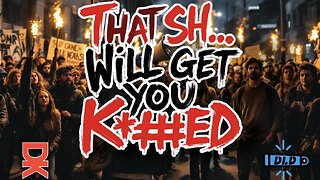 LIVE
LIVE
DLDAfterDark
43 minutes agoDLD Live! That Sh... Will Get You K***ed! What To Consider in SHTF
207 watching -
 LIVE
LIVE
megimu32
4 hours agoON THE SUBJECT: IRL Streamers Attacked & Nostalgic Animal Movies That Made Us Cry
469 watching -
 1:00:54
1:00:54
The Tom Renz Show
7 hours agoMore Epstein/FBI, a Scary Trade War, & the Dem Echo Chamber
7.49K1 -
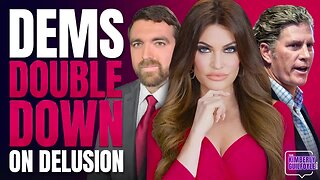 40:43
40:43
Kimberly Guilfoyle
8 hours agoDems Double Down on Delusion-Why? Live with Tony Kinnett & Bo French | Ep.202
77.8K35 -
 1:28:42
1:28:42
Redacted News
6 hours agoBREAKING! SOMETHING BIG IS HAPPENING IN EUROPE ALL OUT WAR IS COMING AGAINST RUSSIA, TRUMP FURIOUS
121K291 -
 47:50
47:50
Candace Show Podcast
7 hours agoBREAKING: Judge Makes Statement Regarding Taylor Swift's Text Messages. | Candace Ep 155
113K120 -
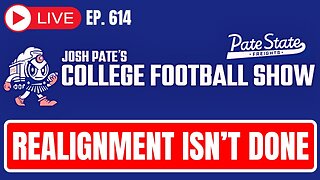 1:14:23
1:14:23
Josh Pate's College Football Show
4 hours ago $0.32 earnedCFB’s Most Hated Teams | FSU & Clemson Future | Big Ten Win Totals | Star Rankings Overrated?
14.5K -
 1:33:47
1:33:47
CatfishedOnline
5 hours agoGoing Live With Robert - Weekly Recap
27.8K